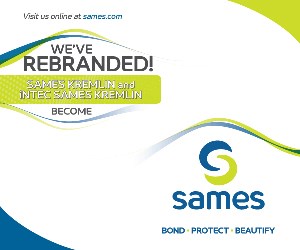On My Mind: Leveraging Your Experience
If there’s one thing I’ve learned in my limited time in the finishing industry, it is that finishing is more an art than a science.
If there’s one thing I’ve learned in my limited time in the finishing industry, it is that finishing is more an art than a science. Sure there are scientific principles that must be followed. Understanding coating formulations and coating-substrate interactions requires a great deal of scientific knowledge.
This scientific knowledge is just the beginning of a finisher’s expertise. A strong foundational knowledge must be coupled with years of experience to properly diagnose and solve problems (this is where the art comes in).
But, finishing a part to a customer’s unique requirements does require much more than textbook knowledge. It requires years of experience, trial and error, success and failure.
Assuming this to be true, a finisher’s business doesn’t have as much to do with what’s inside the four walls of the plant (coatings, equipment, etc.) as it does the knowledge and ideas contained within the minds of the employees. The question is—are you using your strongest asset, your employees’ knowledge and expertise, to its greatest advantage?
From what I’ve seen on visits to finishing shops, parts come to the base of knowledge and expertise, parts get finished by that base, then parts leave that base and return to their original manufacturer. That’s the traditional finishing model. But, is this the only way to operate?
Probably not. On a recent visit, I had an interesting discussion with a finishing shop owner who was going to leverage his and his employees’ finishing expertise in a unique way. Instead of bringing the work to his knowledge base, his plan was to take his knowledge base to the work. Even though the company had its own finishing shop, the goal was to partner with OEMs by having his employees run and manage the finishing line in the OEM's plant.
I see many advantages to this setup: greater collaboration between manufacturers and finishers; possibly more input from the finisher on part design; a higher level of respect for the finisher since he is more visible on a day to day basis; cost reductions (shipping, personnel and perhaps others); time reductions; and fewer hassles for the OEM, allowing it to focus on its core business.
Remember, your greatest resource is your knowledge and expertise. To maximize your profit, you have to maximize its use.

.JPG;width=70;height=70;mode=crop)














